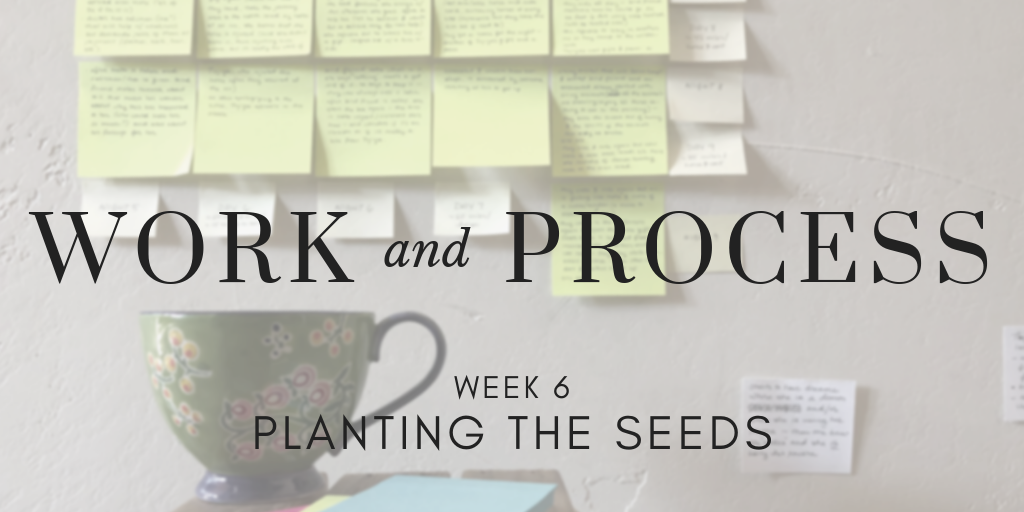|
Today I’d like to start in what might seem at first glance an unlikely place: the end of The Matrix Revolutions, the third installment of The Matrix Trilogy, released in 2003. For reasons we probably don’t need to discuss here, I kind of wish The Matrix Trilogy had stopped with the first movie, but The Matrix Revolutions did teach me one thing about storytelling that’s stuck with me for over fifteen years. It’s the climactic battle between Neo and Agent Smith, in the homogeneous, greenish-hued nightmare the Matrix has become, and Smith declares that he’s seen the ending of the fighting, and it ends with Neo’s defeat. There’s a battle that probably would have been better with a good deal less flying around, and finally Neo admits, “You were right, Smith. You were always right. It was inevitable.” He lets himself be absorbed, because Neo being absorbed by Smith is the only way to defeat him.
This line is actually a reference to The Matrix Reloaded, a whole movie ago, during the first battle in which Agent Smith tries to absorb Neo, and Smith says in that sinister-but-matter-of-fact growl that probably only Hugo Weaving can pull off, “It is inevitable.” And he’s right. And the reason he’s right is because after that moment, there is only one place the story could go, only one showdown, only one way to stop him, and it all leads (at least theoretically) to this one moment, this one, inevitable conclusion where Neo lets Smith take him. But for something to feel inevitable--an ending, a plot point, an OTP--the writer has to put in a lot of work planting the seeds and training them to grow toward their target. This week, in honor of my friend Meg, one of the contributors of Writer’s Block Party, a great blog on writing and publishing, I’d like to talk about how I approach that work, at least in part. (Some hints/spoilers for The Reader Trilogy below.) First, I want to refer back to last Sunday’s post and note that I am a structure writer. I conceive of my books through the major beats or crisis points in a story and the arcs that connect them. Before I ever begin drafting, I know at least some of these points, so I can write toward them. For example, all the way back when I was first drafting The Reader, I knew these major story beats for the final book:
To have these beats feel organic (that is, unforced) and meaningful to the story, I had to start introducing them early. I think of it like planting seeds in the narrative. Start them early, keep them growing by returning to them, and have them ripe by the time the story needs them. A note: My general rule is to reference something--an arc, a plot point, a joke, a meaningful interaction--at least three times. Once to introduce it. Twice to remind the audience that it’s there and to strengthen their expectations for it. A third time for the payoff. I think The Avengers (the first one) does this particularly well with Agent Coulson’s Captain America trading cards. First, they’re a joke, poking fun at Coulson-as-fanboy, as Black Widow asks Captain America if Coulson has asked him to sign his trading cards yet. Then the joke pays off when we see Coulson describing the cards to Captain America: “It’s a vintage set... It took me a couple years to collect them all… Near mint… Slight foxing around the edges...” But the third time the cards are mentioned, their meaning has changed. It’s just after the midpoint, and Loki has escaped, Coulson has died, and the Avengers are more divided than they have ever been. Nick Fury throws the bloodied set of cards on the table, trying to motivate the Avengers to unite. As an audience, we’re fresh off Coulson’s death and we’re reminded of what a pure nerdy boy he was, how dedicated he was to the idea of the Avengers, and how much we want to see them assemble too. (Do it for Coulson, Avengers!) As I said in Week 4, one can and should, of course, break this “three times” rule if it suits the narrative, but it’s a good one to keep in mind as you’re planting the seeds for events to come. From The Reader Trilogy, let’s take “how the protagonists would defeat the Guard” as an example. A lot happens during this crisis point--magic, death, ship battles, various other shenanigans--and a lot of it involves Cannek Reed, the outlaw captain obsessed with immortality. To get him to this point, where someone so consumed with his own survival is willingly running toward his own death in the hopes of making a better world, I had to plant a lot of seeds, and I started early, in The Reader. The third time we see Captain Reed, he’s five years in the past, at the bottom of a maelstrom. This scene is actually from the end of another of his quests, one that we never get to see, but it plants two important pieces of The Reader Trilogy’s climax: an important artifact that comes into play during the final battle and how Reed is going to die. It’s the latter, knowing how he’s going to bite the bullet (so to speak), that turns Reed into the character he is, the one obsessed with conquering death. It’s the whole reason he goes to the edge of the world, where he discovers an important piece of information for the climactic battle. It’s also what drives him to search for the Trove of the King, a journey that starts in The Reader, causes his adventures to intersect with Sefia’s, and takes him all the way into The Storyteller in search of another important artifact. Every time one of these artifacts or pieces of information is mentioned, it becomes more memorable and more important--to continue the metaphor, like a vine growing through the story, toward a crisis point I knew I’d have from the beginning. In this way, these narrative vines are woven throughout the novel, hinting at events to come. Of course, I don’t plan everything. In fact, revision is one of my favorite parts of the process because it allows me to plant even more seeds (for characters or plot points I discovered as I was drafting) and train even more vines, braiding them together and tightening the narrative until (hopefully) the beats of the story flow from one to another, as inevitable as a river flowing out to sea. Next week: STUPIDLY AMBITIOUS. You might have noticed in my weekly work space photos, which are at the top of every Work and Process post, that I’m currently outlining a New New Secret Project. It’s been awesome… and so far out of my comfort zone, because I’m not an outline writer by nature, that it’s been a real challenge. But I kind of love that. Next week, I’d love to talk about challenging yourself. How do you level up your skills? When do you set new goals for yourself? What inspires you to do better, whether in concept or in process? Bring your hot beverage of choice and meet me next Sunday at tracichee.com and/or post your own responses with the hashtag #workandprocess. Cheers. <3 Work and Process is a year-long journey of exploring and reflecting on the artistic process, craft, and working in a creative field. Each Sunday, I’ll post some thoughts, wonderings, explanations, and explorations on writing and creativity, and by the end of it, I hope to have 52 musings, examinations, meanderings, discoveries, bits of joy or inquisitiveness or knowledge to share. In each post, I’ll also include a topic for the following week, so if you happen to be inspired to question/wonder at/consider your own work and process, you’re welcome to join me. We’ll be using the #workandprocess hashtag across all social media platforms, and I hope we find each other to learn and connect and transform on our creative wanderings. Comments are closed.
|
ARCHIVES
February 2024
CATEGORIES |


 RSS Feed
RSS Feed